AceMagic Kron Mini K1 7430U Review - The Choice of Budget Office PC with WiFi 6E
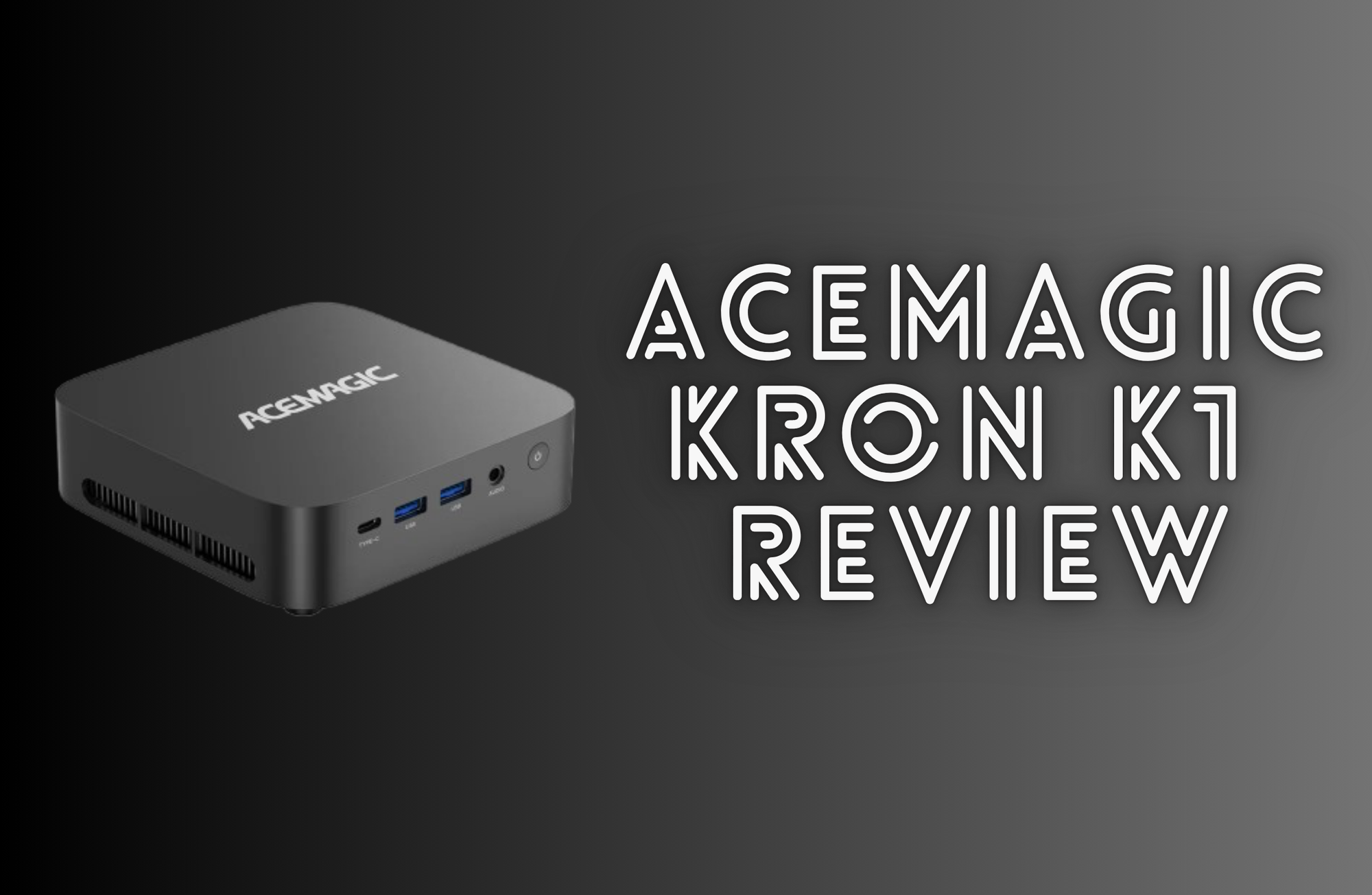
Preface
In my review of the Kamrui E3B, I considered it one of the top choices for a budget office PC. Its performance and quietness excel in a workplace setting. At $279, it’s a solid choice.
But is there a better fit for the modern office at an even lower cost? I believe the AceMagic Kron Mini K1 7430U is the answer for the $200 segment.
Equipped with the AMD Ryzen 5 7430U, a rebranded Ryzen 5 5600U, the K1 delivers superior performance in its market segment, outpacing Intel counterparts. Its six Zen 3 cores and twelve threads provide ample performance for office tasks, though constrained by the thermal envelope and overall thermal design. The Radeon Vega 7 integrated GPU isn’t suited for gaming but significantly outperforms Intel’s integrated GPUs in general business-oriented graphics tasks.
This may seem like another run-of-the-mill mini PC with a capable APU, but what if I told you it includes a Wi-Fi 6E wireless module? This is a game-changer at this price point. Next, let’s tour the exterior and interior.
Amazon Affiliate Link: Click Here
Design
The AceMagic Kron K1 largely resembles the looks and the size of the Warlord W1, just with a color change to matte black, which I personally think looks fantastic.
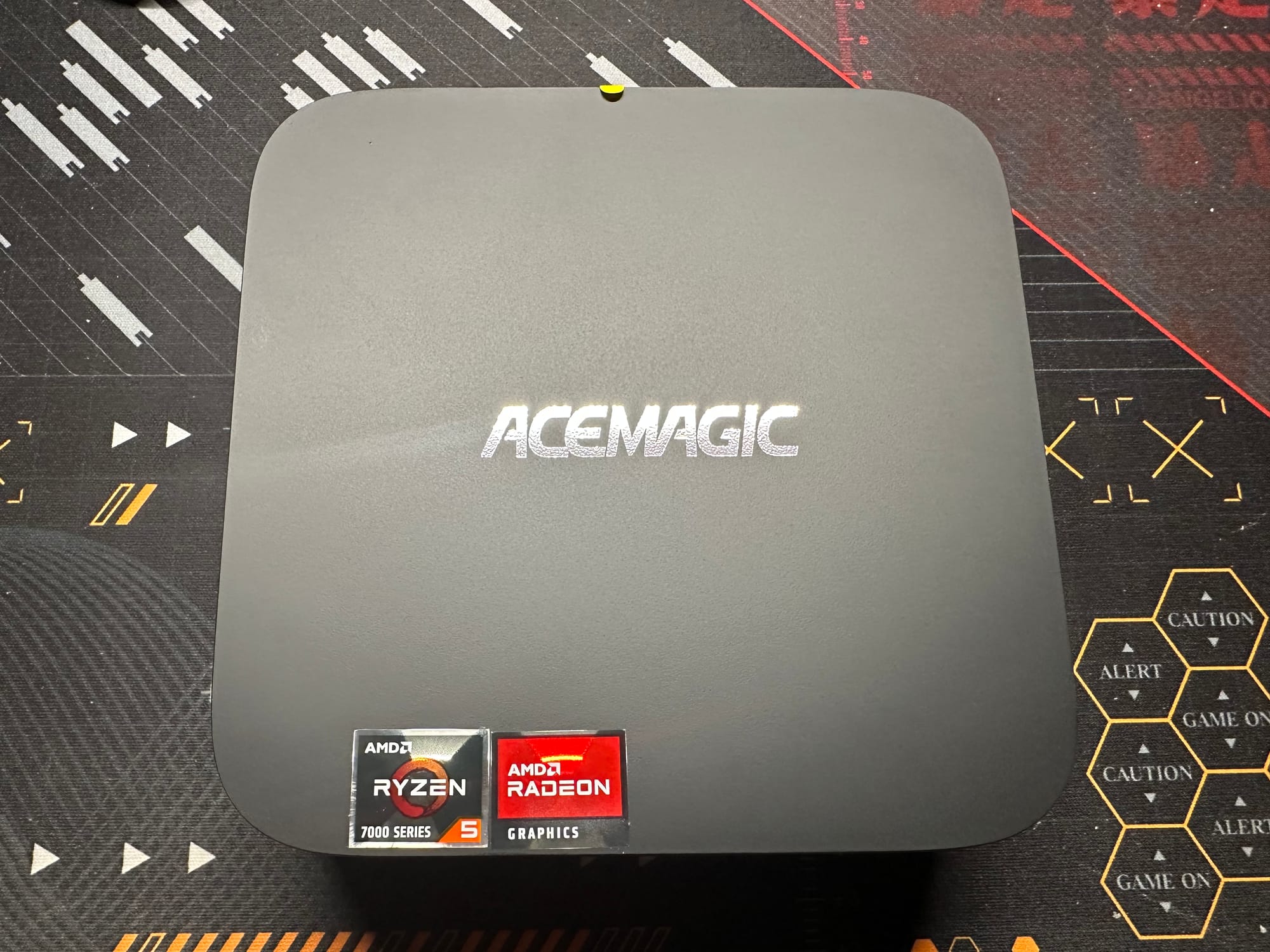
The front features one USB-C port (10Gbps), two USB-A 3.0 ports (5Gbps each), a 3.5mm combo jack, and a power button with an integrated LED.
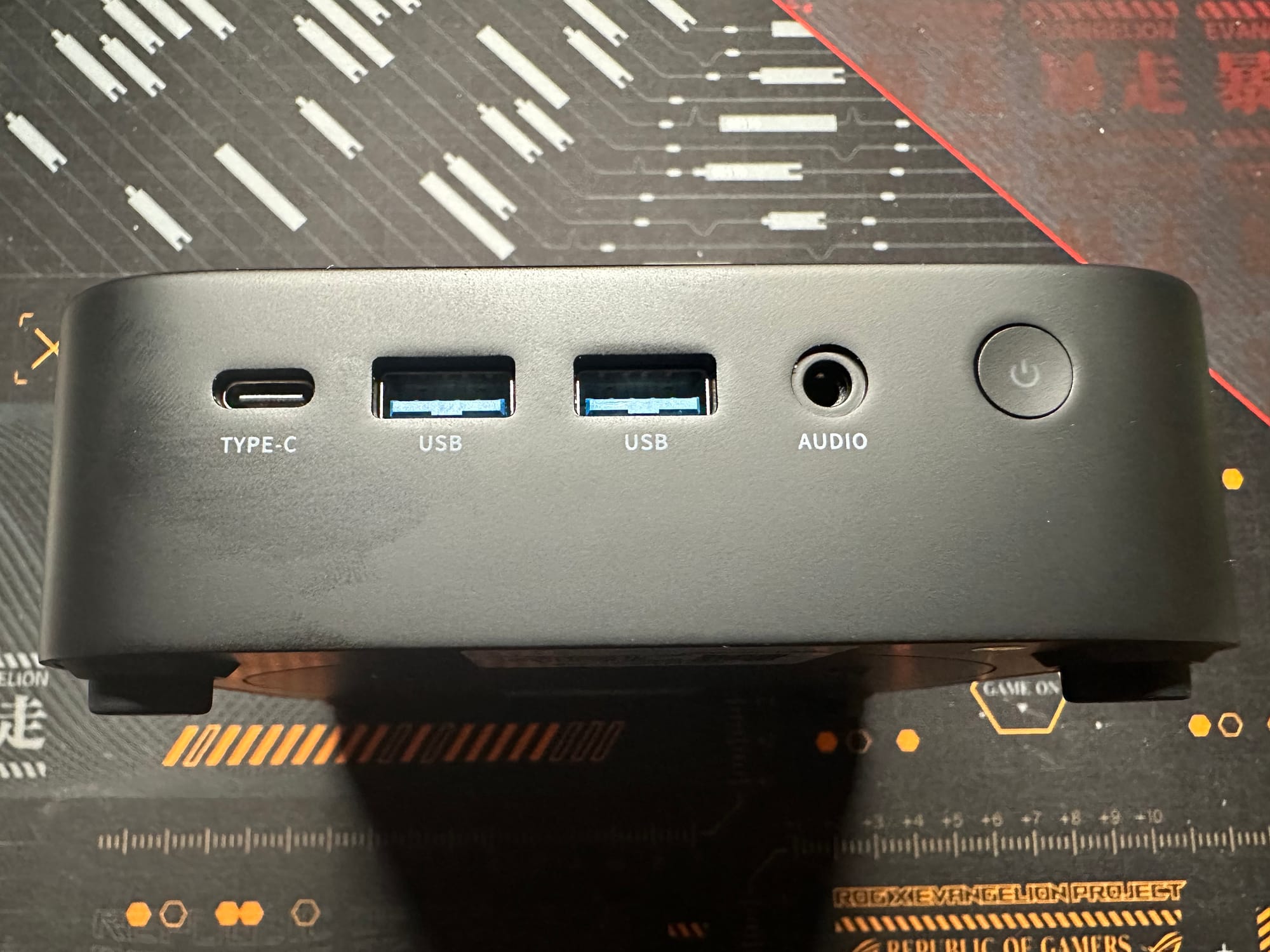
The sides feature large perforations along the bottom for ventilation.
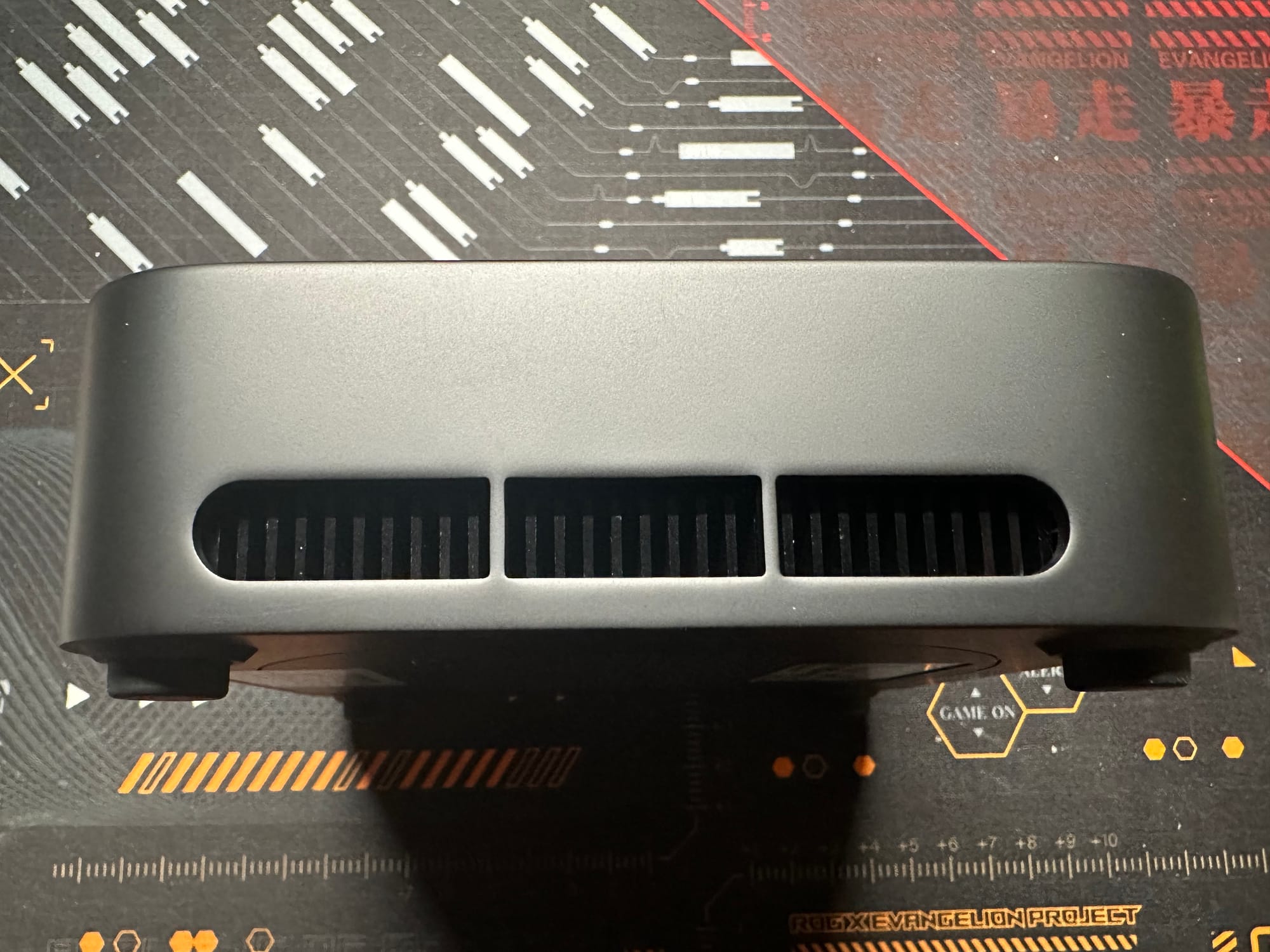
The rear includes an HDMI 2.0 port, a DP 1.2 port, a GbE Ethernet port, and four additional USB-A 3.0 ports.
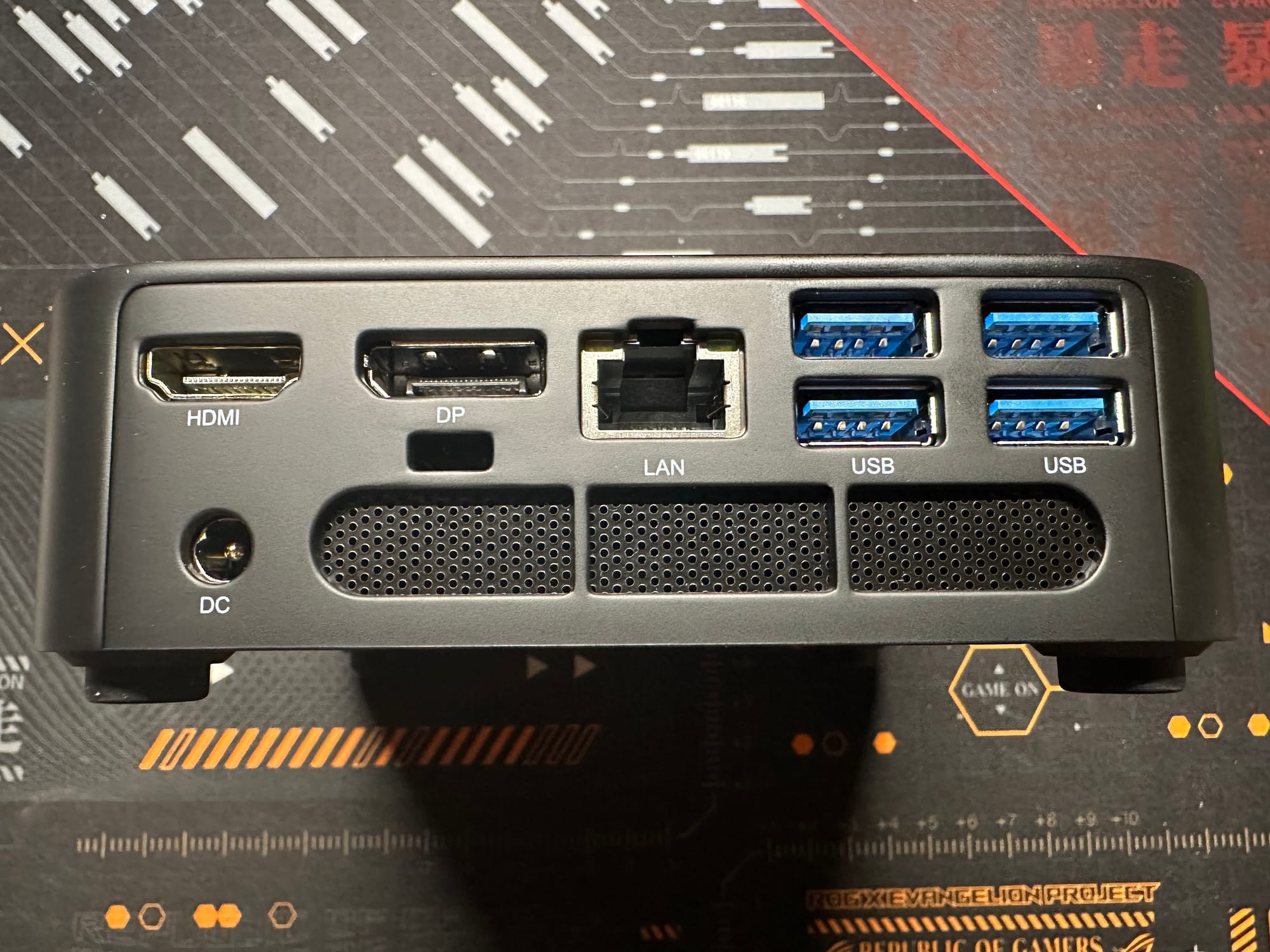
Four rubber feet on the bottom conceal the screws that hold the case together.
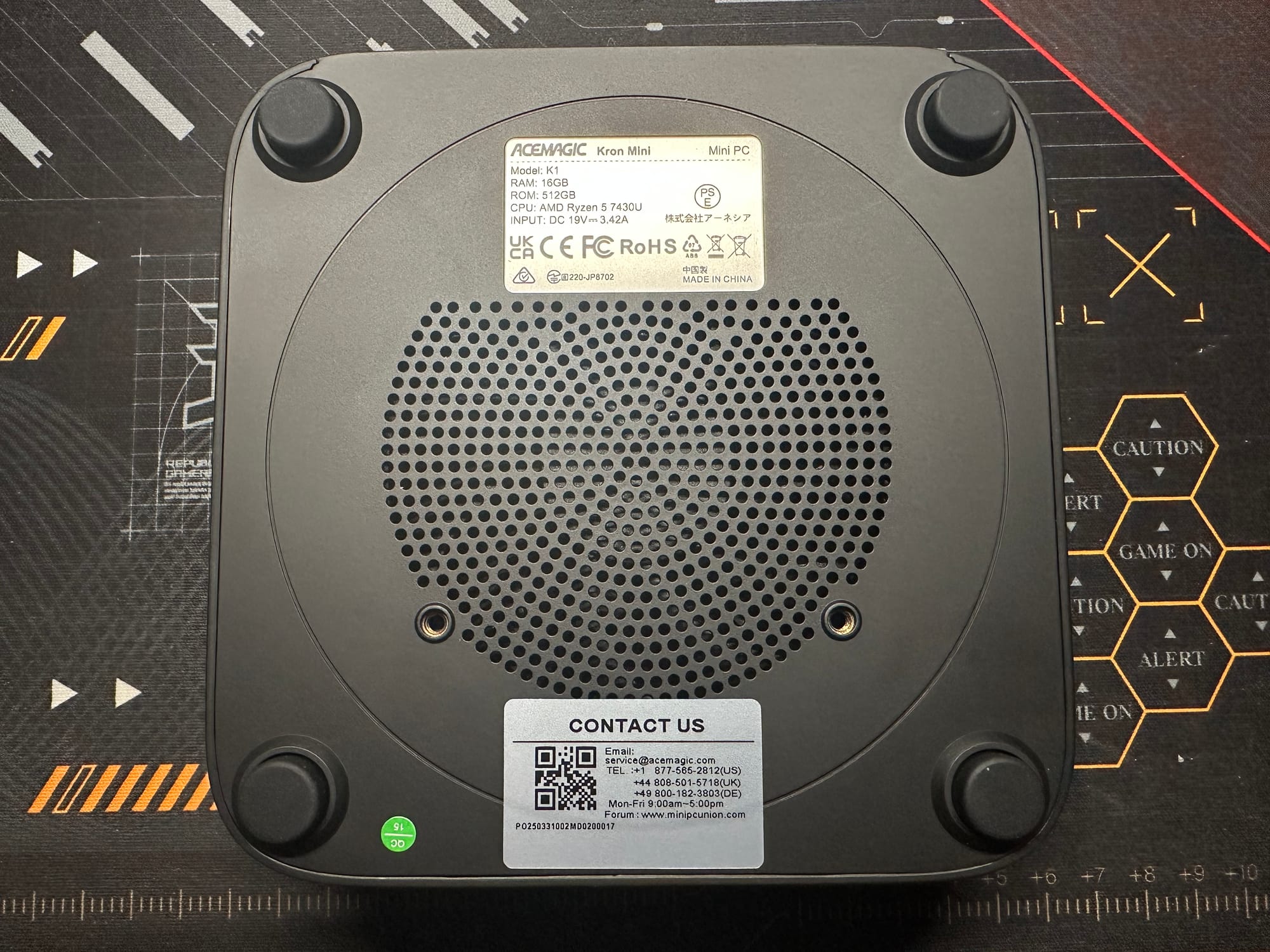
Interior
To open the case, pry off the rubber feet, remove the four Phillips screws, and apply light pressure to one side to release the clips. The case opens easily.
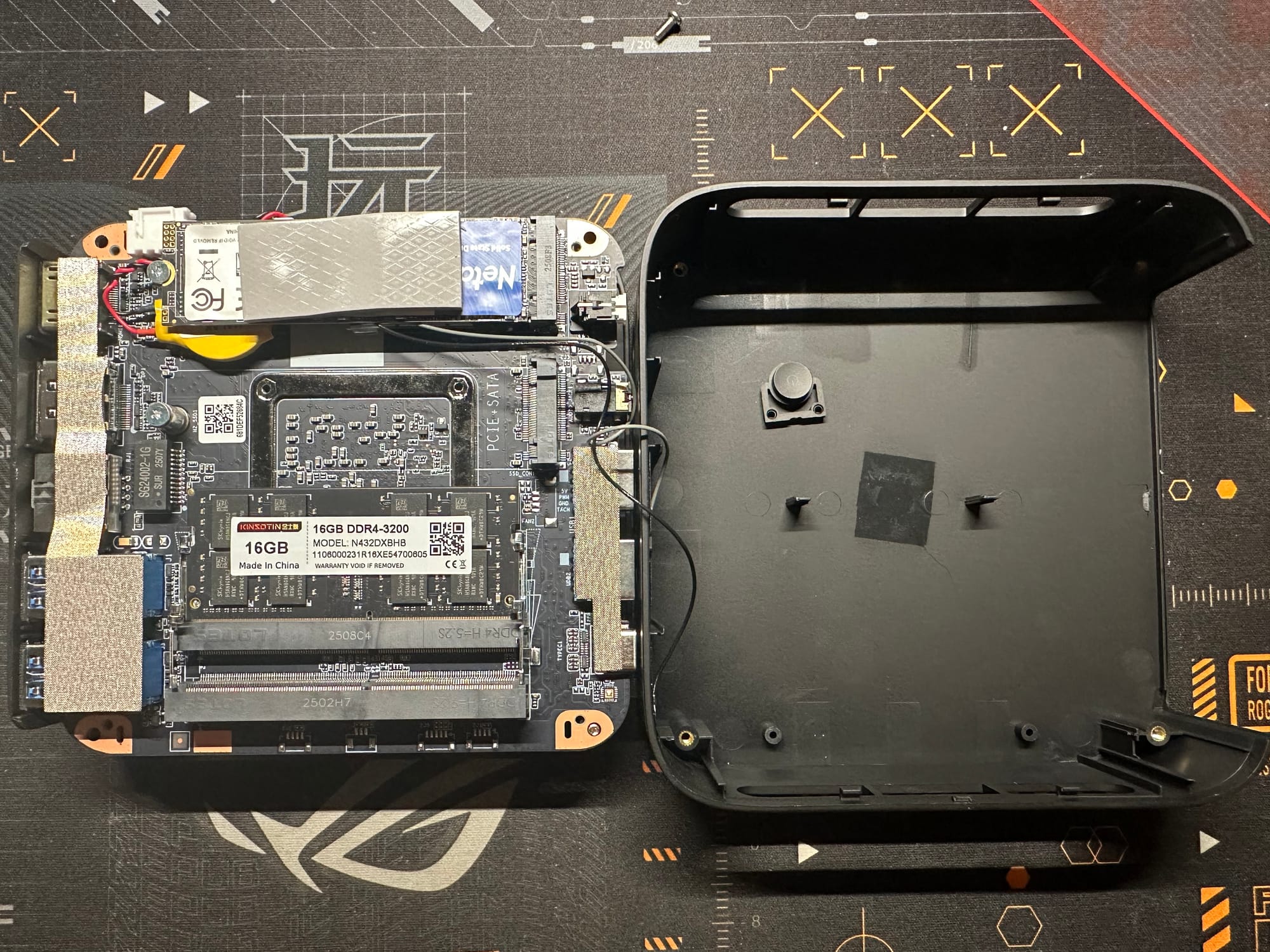
Here we can see that It includes only a single 16GB DDR4-3200 RAM stick, similar to the Kamrui E3B. A good design for future upgrades, but this limits performance significantly, as discussed later..
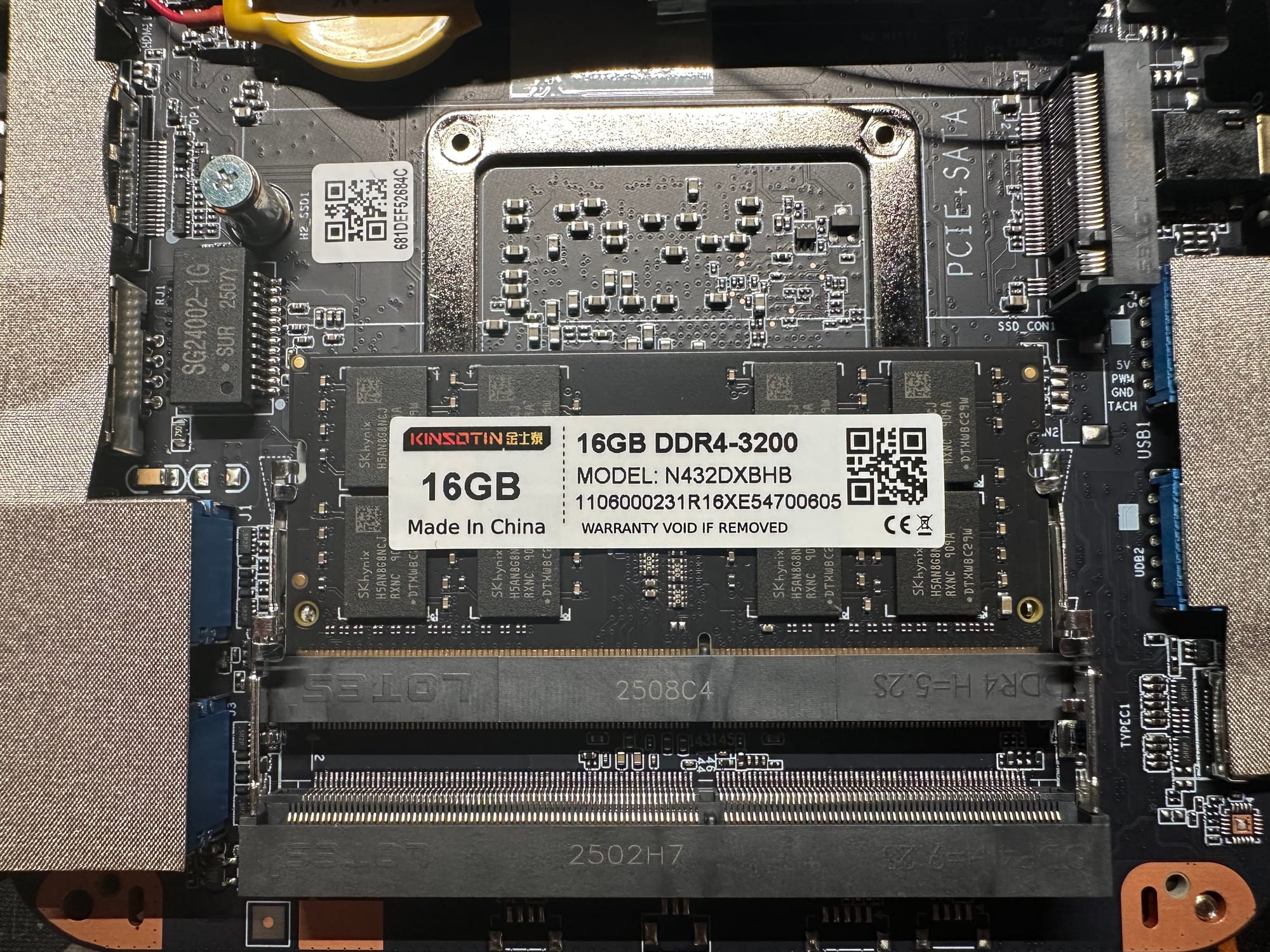
The SSD is a Netac 512GB SATA M.2 drive, common in budget models but known for slower performance.
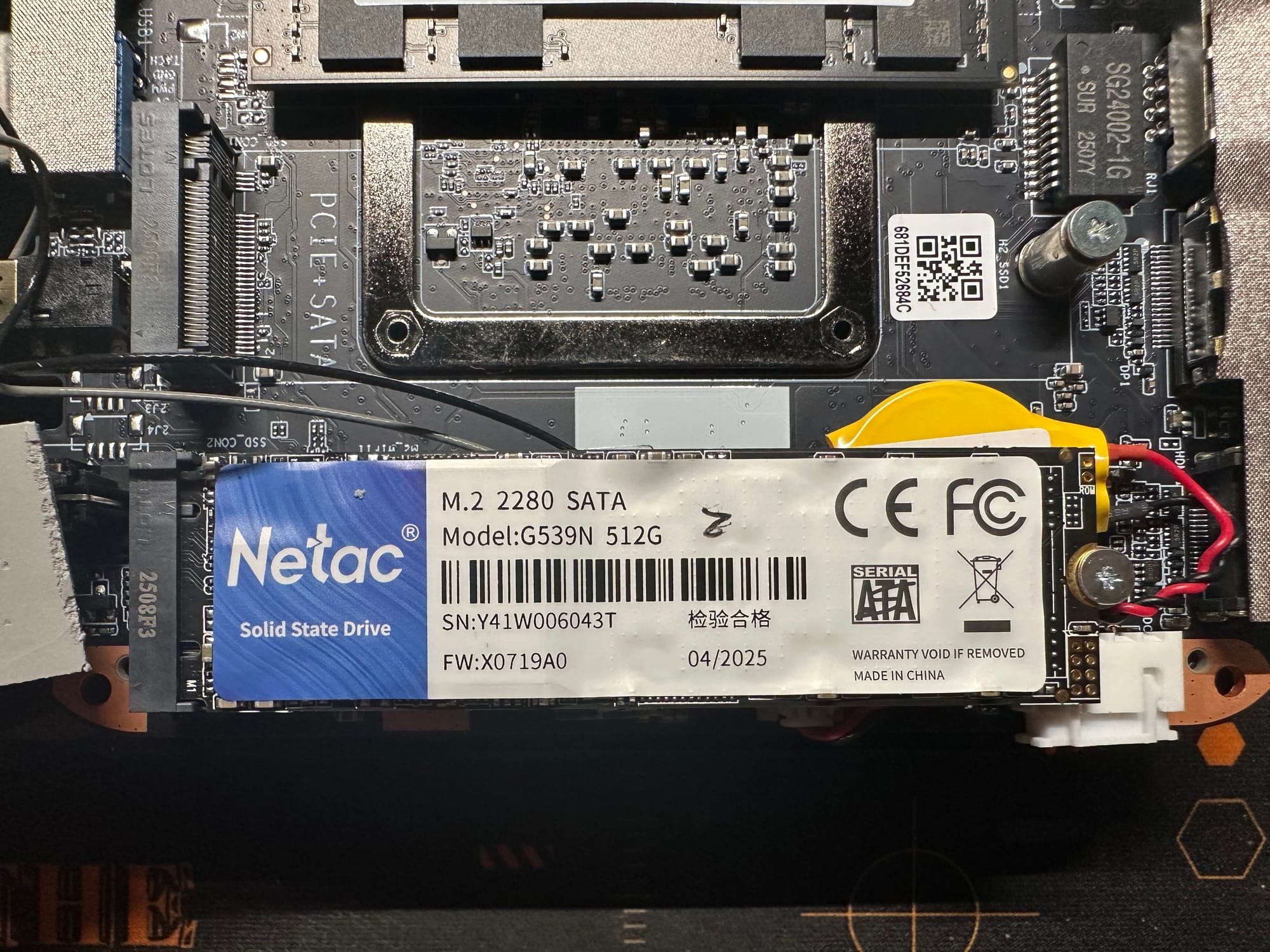
A standout feature is the MediaTek MT7902 Wi-Fi 6E module. We will see how it performs in later tests.
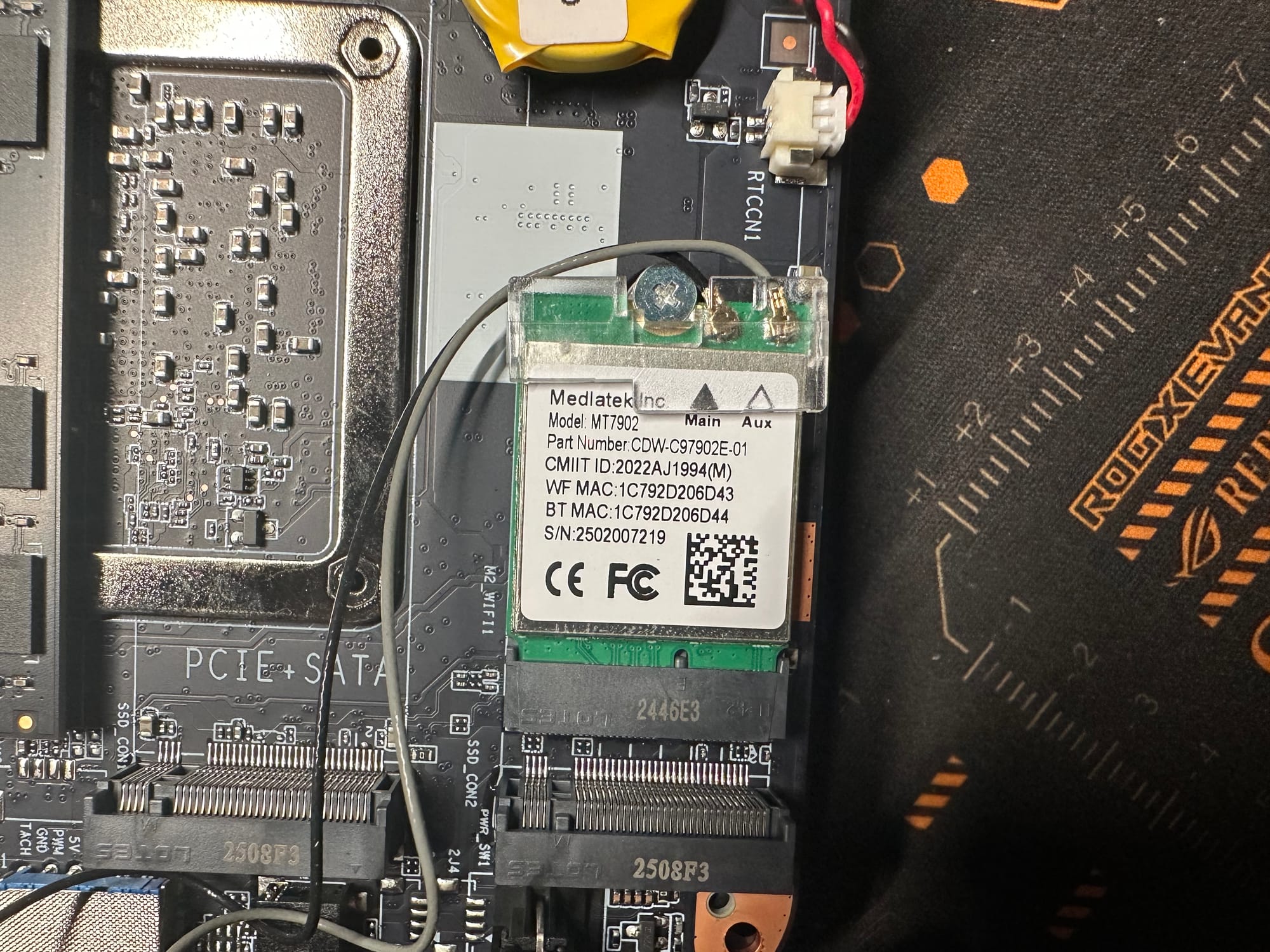
It also has two M.2 slots: one for SATA, and the other supports both NVMe and SATA.

The included power brick is a 19V, 3.42A switching power supply rated at just under 65W.
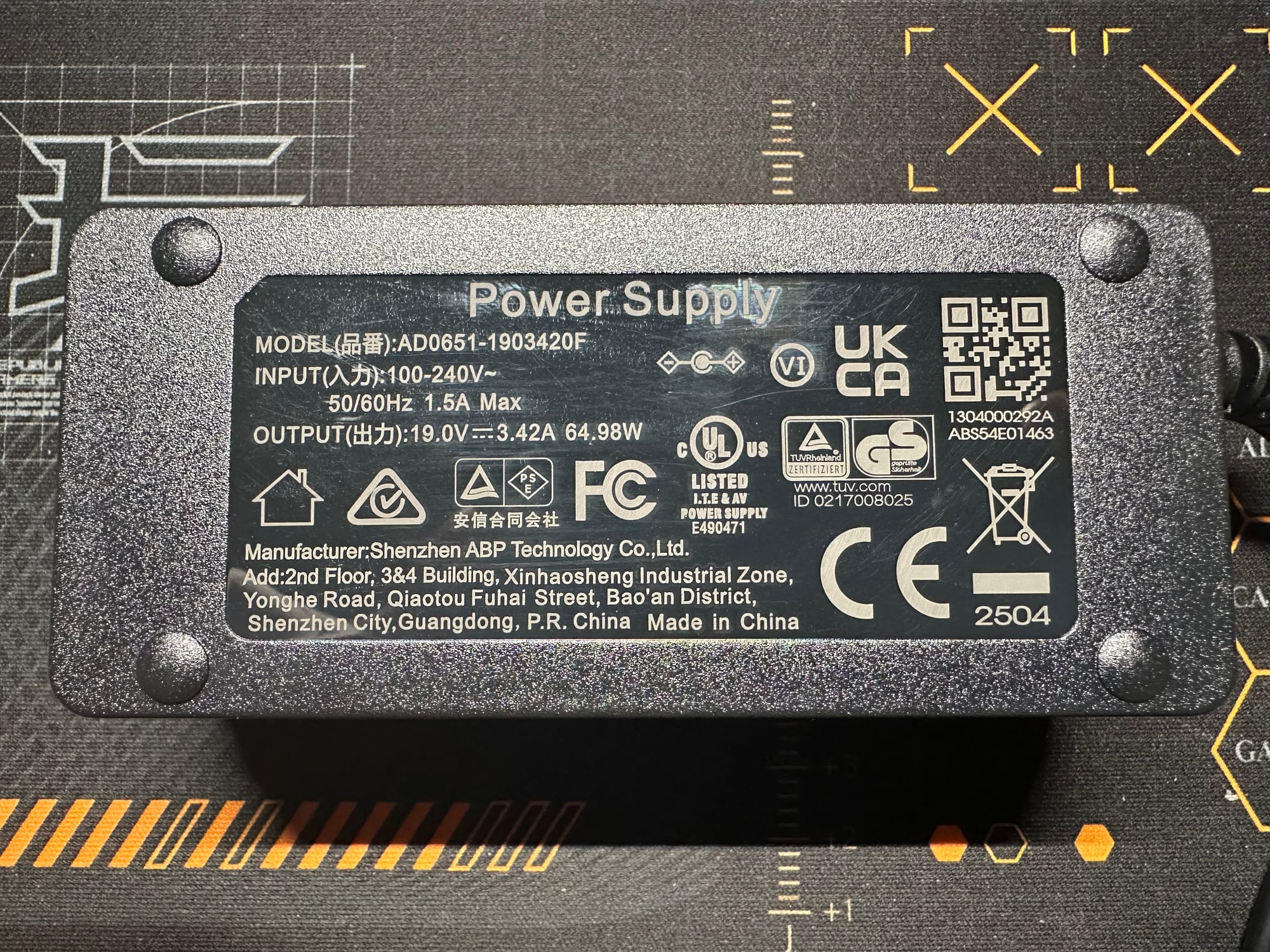
Performance
All tests used a single-channel RAM configuration unless otherwise specified.
CPU-Z:
Validation


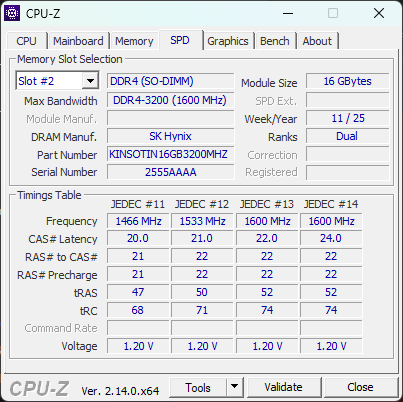
CPU-Z Benchmark
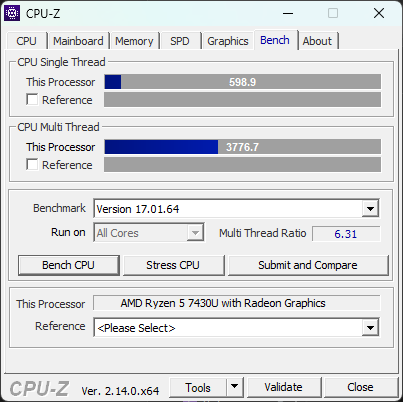
As a Zen 3-based APU, it performs in line with other Zen 3 units in single-threaded tests. In the multithreaded tests, it is about 20% slower than the eight-core Kamrui E3B, which is not surprising.
Geekbench 6
CPU Benchmark

Click here to view the results
It performed exceptionally well in the Geekbench 6 CPU benchmark, scoring at the high end for Zen 3-based APUs.
GPU OpenCL Benchmark

Click here to view the results
GPU Vulkan Benchmark

Click here to view the results
The Radeon Vega 7 shows its age, with a lower Vulkan score than OpenCL. It only has 7 GCN Vega CUs, or one less than the Radeon Vega 8 found in the Radeon 7 5828U chip. However, the extra GPU compute unit in the eight-core model offers negligible benefits
GFX Bench
1080p Normal, Offscreen, DX12
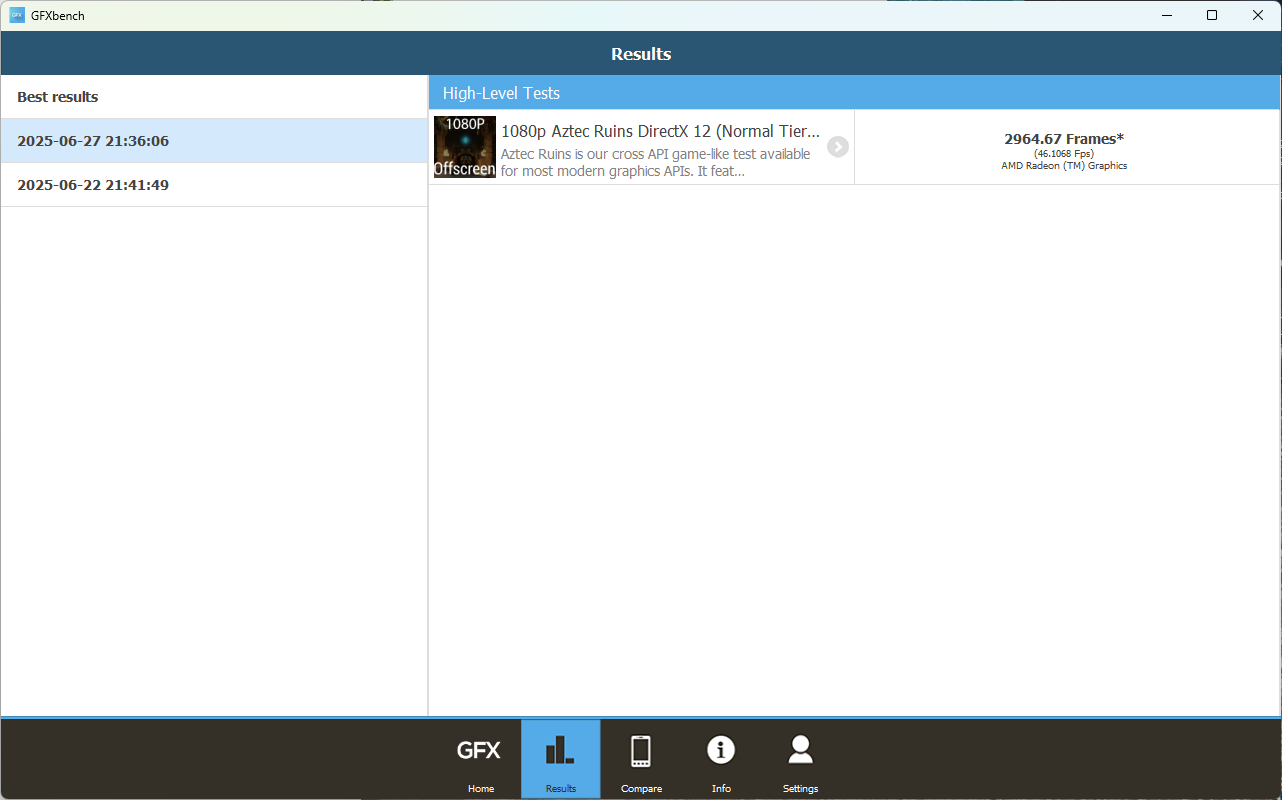
1080P Nromal, Offscreen, Vulkan
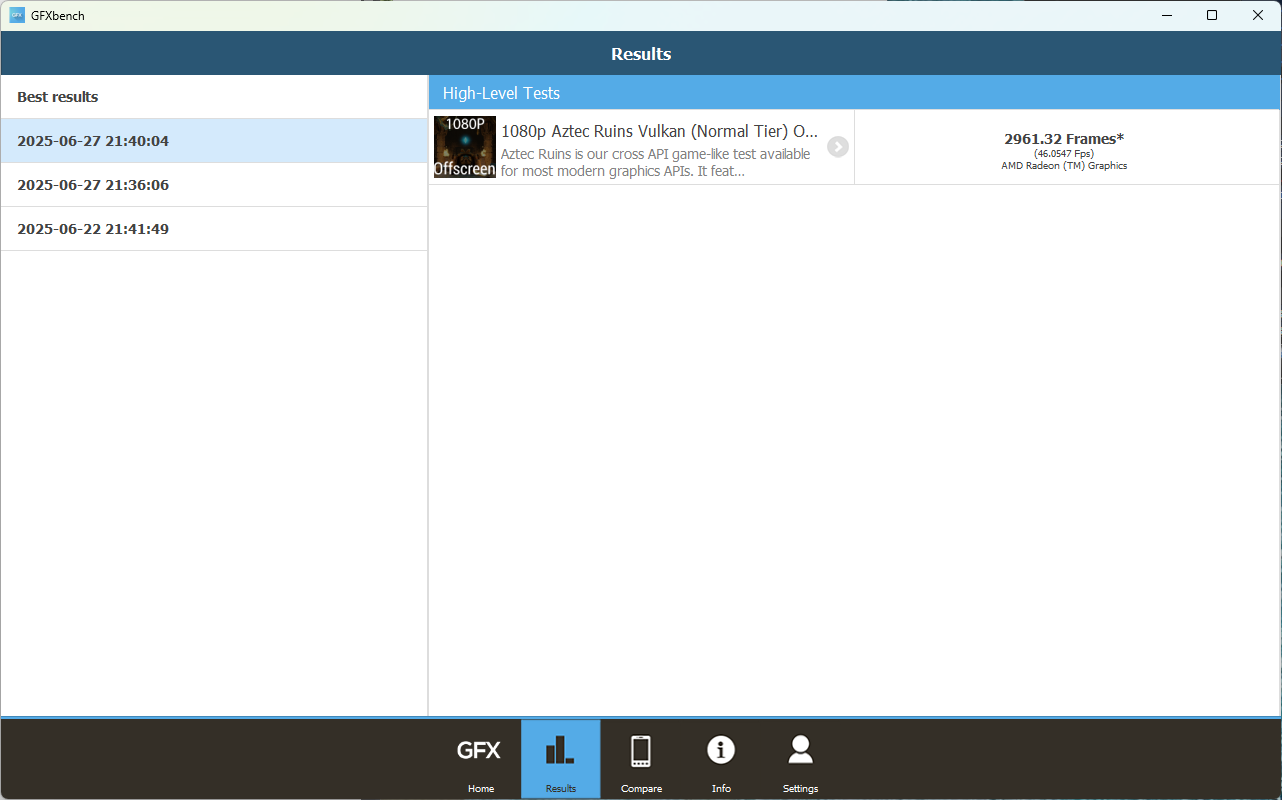
For the GFX Bench, we found that the performance difference between two different APIs were not as pronounced as in Geekbench 6. Both of which scored 46 fps, a very mediocre result, stemmed from low memory bandwidth with single channel RAM.
Unigine Heaven, Basic Preset
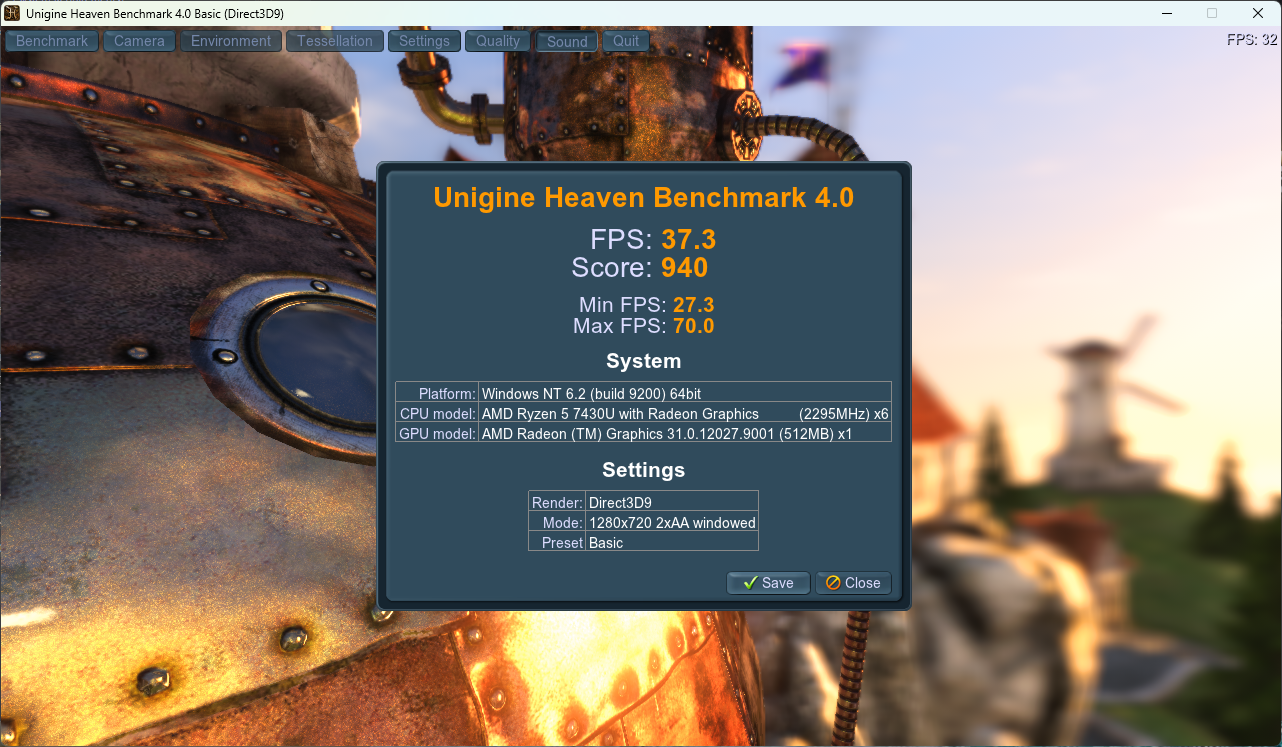
Unigine Valley, Basic Preset
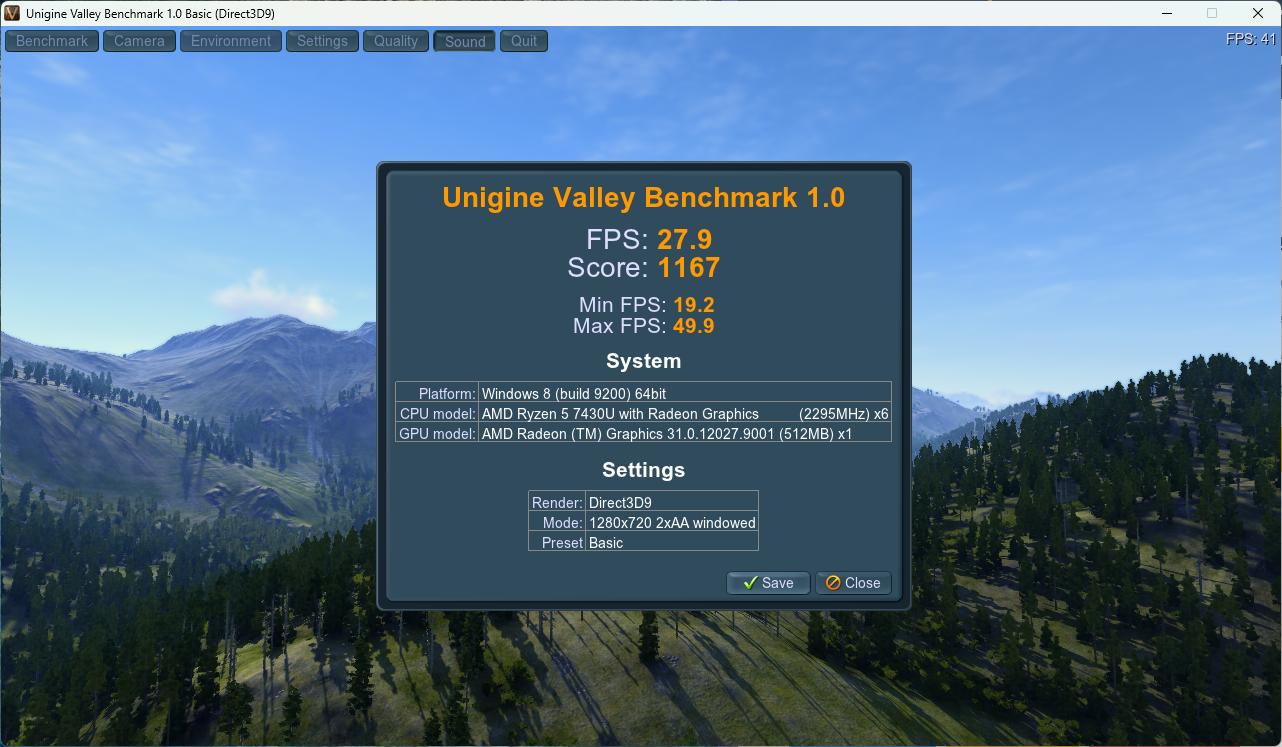
Again, the performance difference between Vega 7 and Vega 8 is indiscernible. Although not a chart topper in the 3D graphics, it will be more than enough for the more office work, including 4K video playback and live-streaming.
Passmark
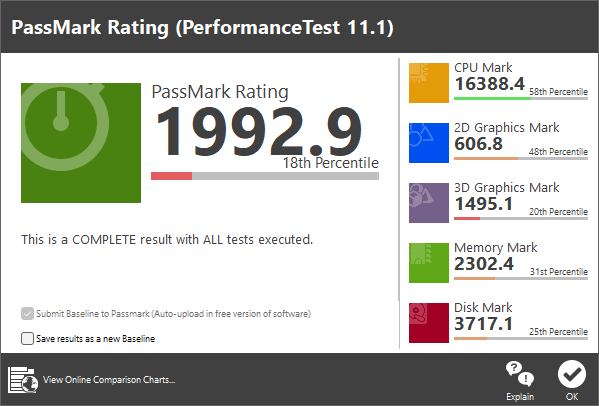
Trapped by the SATA SSD and the single channel RAM, the system only scored less than 2000 pts. However, for comparison, N150 systems scores around 1500 pts with DDR5 single channel RAM, so the K1 with 7430U is still 35% better in performance as poorly configured as it is.
Cinebench 2024
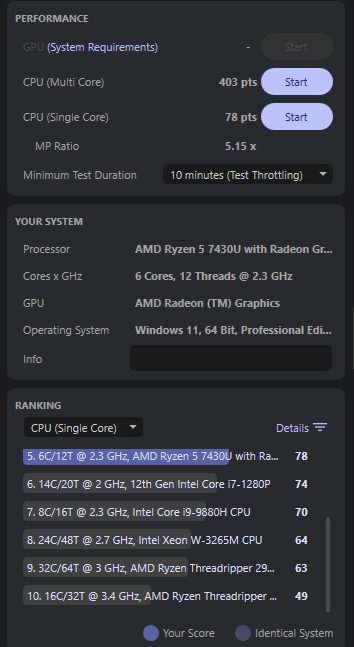
The Cinebench test has a default minimum run time of 10 minutes to test for maximum sustained performance. I was glad to see the 7430U outperformed the very capable Intel i7-1280P in single core test. As for multithreaded, this chip only has a 15W TDP, which is impossible to beat the more power hungry CPUs while CPU utilization is at 100%.
Crystal Disk Mark - Real World Preset, Mixed Read/Write
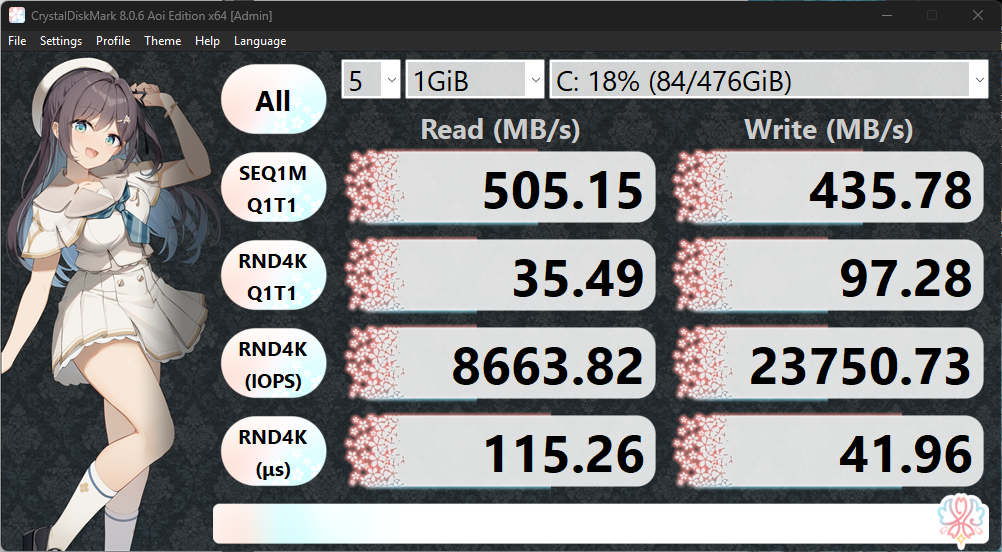
This is one of the weakest components in this otherwise capable unit—the SATA-based M.2 SSD. It didn’t skimp on capacity, offering 512GB in that regard, but it surely is slow. Upgrading to an entry-level PCIe 4.0 TLC SSD and cloning the original disk using software like Macrium Reflect is recommended. The original SATA SSD can then serve as a backup or secondary storage.
WiFi 6E - File Transfer, Line-of-Sight
To evaluate the performance of the MediaTek MT7902 WiFi 6E module, I paired it with a TP-Link Omada EAP773 Tri-Band WiFi 7 Access Point with 2.5GbE backhaul to my server. Since the AP is mounted to the ceiling and in the same room as the unit, the environment is as ideal as it gets with direct line-of-sight, and it is less than 20 feet away.
Although I have a new SSID created just for this test, I still have lots of other WiFi devices all served by this one AP, so the test result may not be indicative of actual performance.
| Test | Best | Worst |
|---|---|---|
| Ping | 2ms | 3ms |
| Download - from NAS | 103 MB/s (824 Mbps) | 58 MB/s (464 Mbps) |
| iperf3 | 870 Mbps | 535 Mbps |
This is really a game changer in this price segment - small business can just deploy a WiFi 6E, or a future-proof WFi 7 4x4 MIMO access point to enable all these WiFi 6E clients with Gigabit-Ethernet-like speeds. The max 103 MB/s download speed is more than twice as fast as WiFi 5/6 clients, almost at GbE speeds which max out at 125MB/s but usually less.
Performance Analysis
Cinebench, Multi-Core
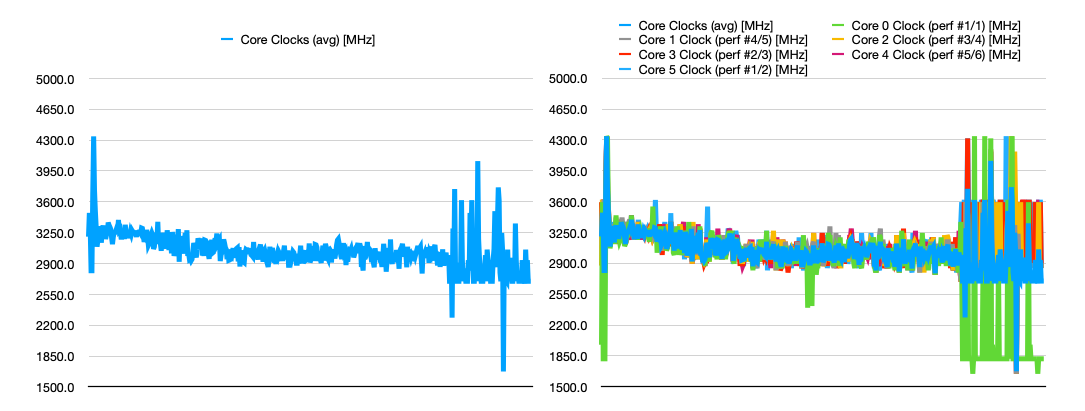
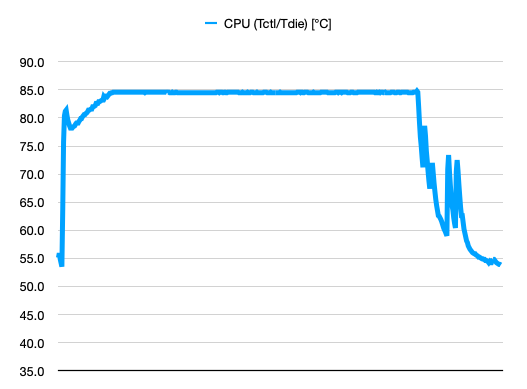
The data was collected during the Cinebench 2024 Multi-Core benchmark. The CPU shows a large spike at the start but quickly stabilizes at about 3.25 GHz, before reaching the factory temperature limit of 85°C. The core clock hovers between 2.9 GHz and 3.25 GHz for the latter part of the benchmark. Spikes at the end were caused by Windows applying background updates, which was frustrating to say the least.
Cinebench, Single-Core
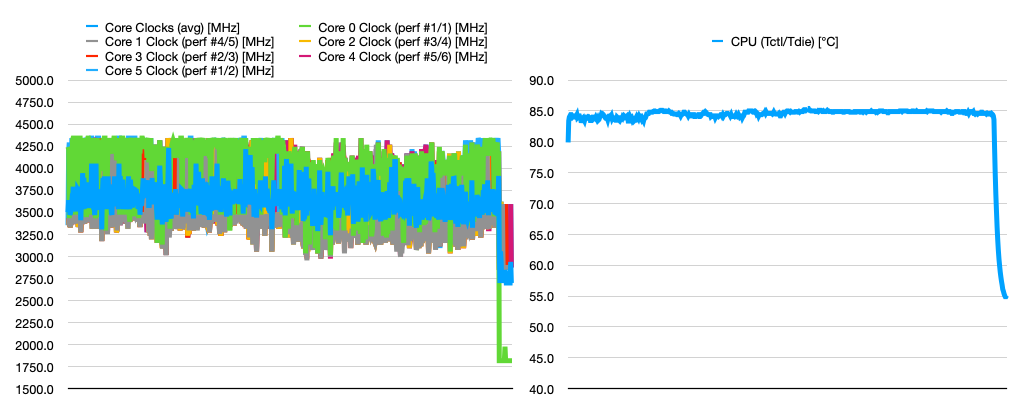
The CPU can indeed boost to spec at 4.3GHz when the workload is only occupying a single core. In fact, the number is closer to 4.35GHz. Once the test was complete, the temperature quickly dropped from 85 degrees Celsius down to the 55 degrees Celsius at idle. I do feel the thermal solution is a bit under-built, since single core workload should not have been able to hit the temperature wall.
Power Consumption and Efficiency
This analysis provides accurate power consumption data thanks to my recent project of building an ESP32-powered Power Monitoring System.
Load Test - Cinebench
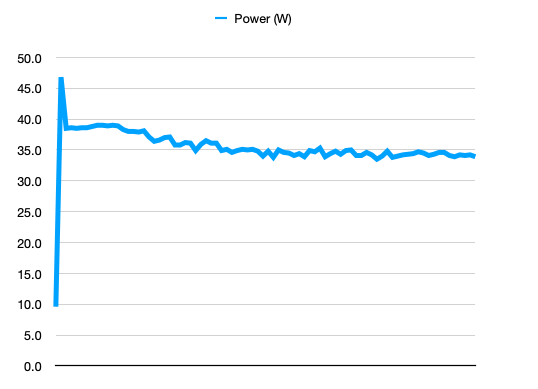
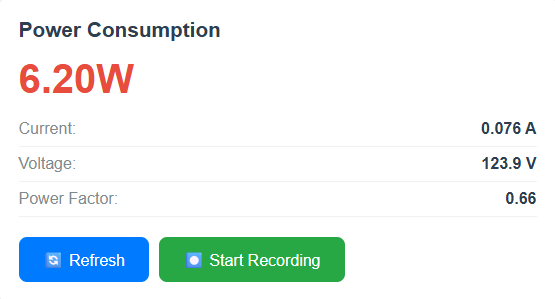
At idle before the test began, the K1 consumes about 6W. Shortly after the test began, the CPU boost engaged, and the system drew around 47W for less than 10 seconds and kept trending down because of thermal limits, finally stabilized around 35W for the remainder of the benchmark run. It consumed about 9 Wh to complete the benchmark, yielding an efficiency score of 44.78.
Noise
At idle, the K1 is nearly silent. However, the undersized thermal system requires high fan speeds during demanding workloads, resulting in noticeable noise. I measured about 42 dBA with a noise floor of 39 dBA. The fan noise itself has very little to none high pitched whine, which wasn’t disturbing to me.
But Just How Much Better Is Dual Channel vs Single Channel?
I re-ran a few benchmarks with 2X8GB DDR4-3200 RAM, and compiled a small table for you to see - the difference is staggering.

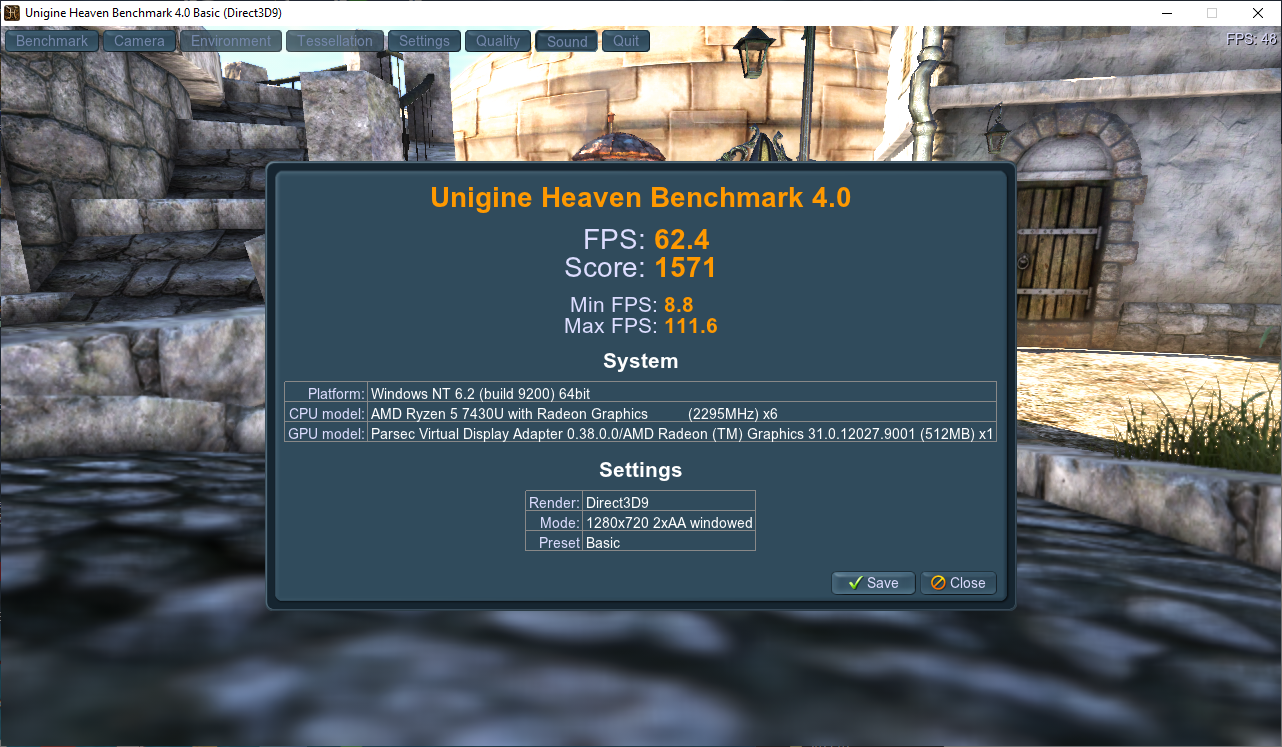
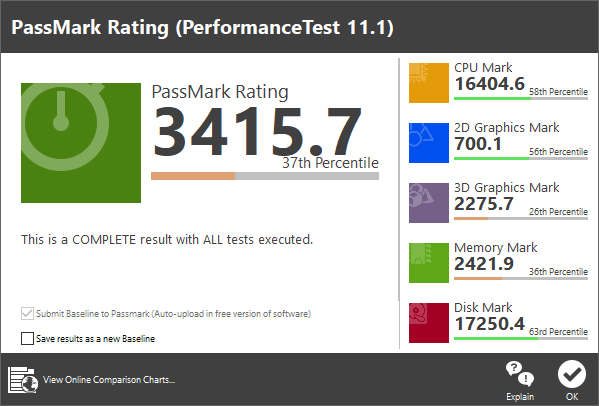
| Test | Dual | Single | Diff |
|---|---|---|---|
| GFXBench, Aztec, DX12 | 77.26 fps | 46.1 fps | +68% |
| Heaven, Basic | 62.4 fps | 37.3 fps | +67% |
| Passmark, Excl Disk, CPU | 5397.7 | 4404.3 | +23% |
| Passmark, Excl Disk | 21801.4 | 20792.7 | +5% |
Graphics performance benefited greatly from the increased bandwidth that dual-channel RAM provides. However, overall system performance impact is quite minimal.
Conclusion
The AceMagic Kron Mini K1 7430U is a compelling budget office PC, delivering robust Zen 3-based performance, Wi-Fi 6E connectivity, and significant upgrade potential at a competitive price. Its six-core AMD Ryzen 5 7430U and MediaTek MT7902 Wi-Fi 6E module make it a standout in its class, offering near-Ethernet speeds for office tasks like file transfers and video streaming. However, its single-channel RAM, slow SATA SSD, and undersized thermal system limit performance in demanding workloads, making upgrades advisable for optimal use.
For small businesses or home offices with constrained budgets, the K1’s Wi-Fi 6E capability offered at this price segment is a game-changer. Traditional Ethernet deployments, while reliable, involve substantial costs—hiring a handyman for 8–15 Ethernet cable drops can easily run thousands of dollars in labor and materials. In contrast, deploying a modern Wi-Fi 6E or even Wi-Fi 7 solution, such as a 2.5GbE Layer 2 PoE switch paired with one or two Wi-Fi 7 4x4 MIMO access points, is significantly more cost-effective. For example, a high-quality Wi-Fi 6E router costs less than $150, and a reputable Wi-Fi 7 access point can be acquired for $190, offering robust, high-speed wireless coverage for an entire office without invasive wiring.
In summary, the AceMagic Kron Mini K1 7430U excels as an affordable, compact PC for general productivity, particularly in environments leveraging modern wireless standards. Pair it with a RAM upgrade and a faster SSD, and it becomes an exceptional value for budget-conscious offices looking to minimize network setup costs.
Amazon Affiliate Link: Click Here